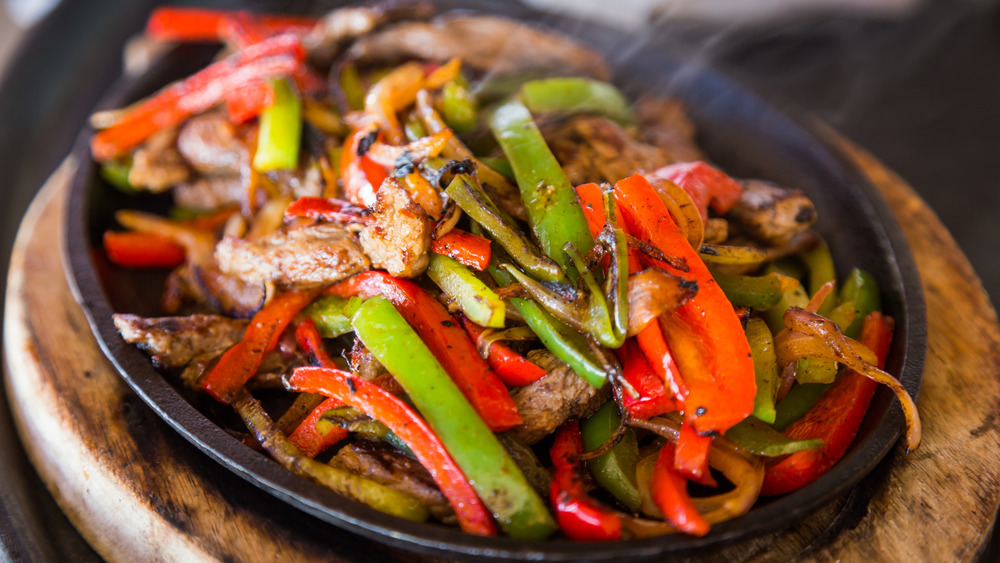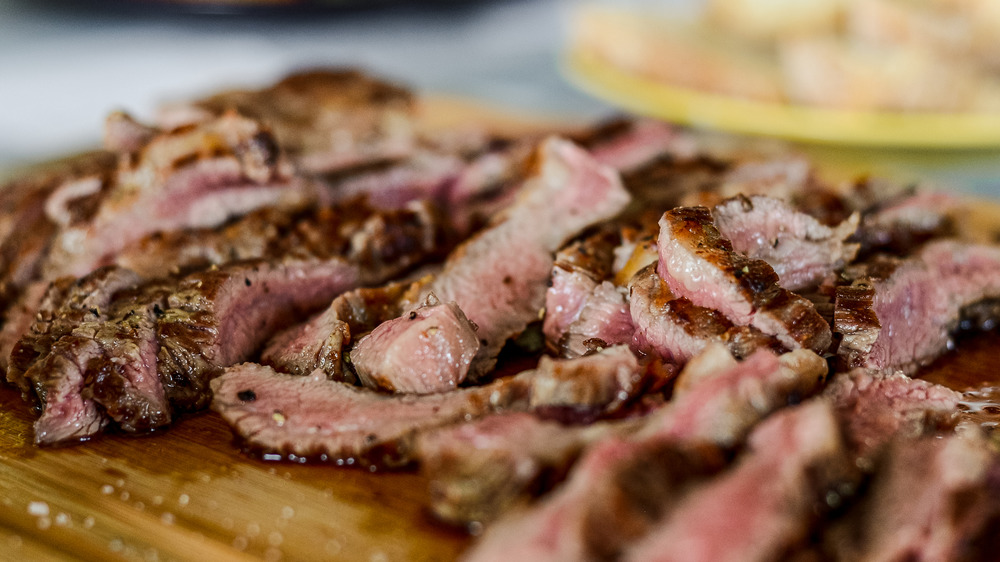This Is The Best Type Of Steak For Fajitas
Tacos might have taken over Tuesdays and burritos might have risen to fame thanks to Chipotle and the likes, but everyone knows that if you want to make everyone jealous at a Mexican restaurant, you order the fajitas. Sizzling strips of juicy steak mixed with peppers and onions served on fluffy, warm tortillas — yes, please. Fajitas (which comes from the Spanish word for "belt" or "girdle," according to What's Cooking America) were invented by ranchers back in the 1930s and only refer to the actual filling itself (i.e. the meat and veggies).
If you're a fajitas fan — and who isn't — you don't have to go to the local Mexican restaurant to get your fix of all things meaty and spicy. You can easily make the popular Tex-Mex dish at home. While there are tons of great recipes for homemade fajitas out there, there is one thing that the best (and most authentic) ones have in common: They all use the same cut of steak.
When making fajitas, go for the skirt steak
Because you're going to be chopping it up anyways, you might think that when it comes to fajitas, steak is steak is steak; in other words: it doesn't matter what cut you get, right? Wrong. Authentic fajitas are traditionally made with skirt steak, explains Chowhound, (the word "fajita" even loosely translates to "little sash," just like the steak strips). This is because when the dish was invented by ranch workers, skirt steak was the cheapest cut of meat. Fajitas were an easy way to turn even the toughest of cuts into something edible and actually even appetizing.
Some chefs and bloggers, like Karina of Cafe Delites, add that skirt steak is the best option because it's more tender and flavorful than other cuts and that you can easily cook it well done without it getting too tough or chewy. However, if you can't find skirt steak, fear not. Blogger Foodie Crush notes that you can easily substitute flank steak or hanger steak (although it will cost you a little bit more).

